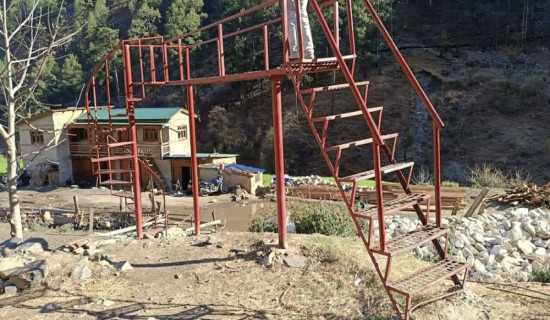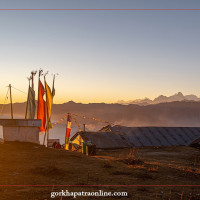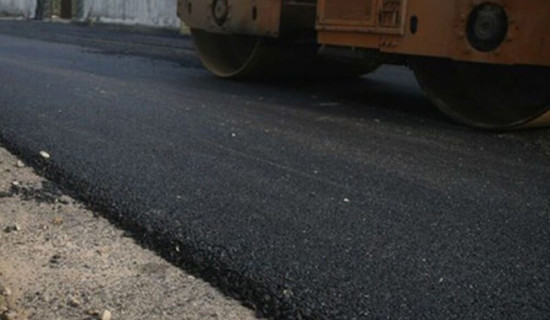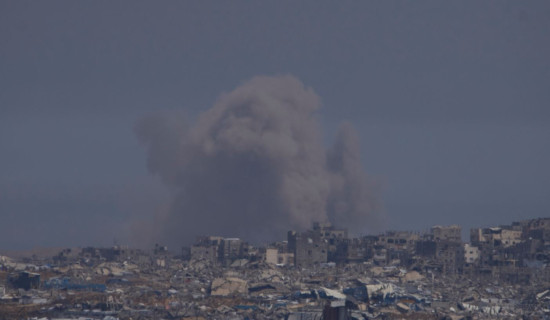- Thursday, 8 May 2025
Karnali River water level low due to poor snowfall
By Rajan Rawat,Humla, Feb. 11: The water level in the Karnali River, which flows through the Humla district, has been gradually decreasing. This decline is attributed to the significantly low snowfall this winter.
According to Simkot Rural Municipality’s Sub-Engineer, Dan Bahadur Rawal, the water level in the Karnali River is considerably lower this year compared to previous years.
He said that the reduction is especially evident in the rivers flowing through the upper Humla region, particularly in Simkot and Namkha rural municipalities. However, he said that the exact decrease has not been measured.
Due to the drying of the river, its width has narrowed and in certain sections where the river used to be wider, people can now cross on foot.
Rawal added that the current water level is less than half of what it was during the monsoon, raising concerns among locals. The section of the river flowing into China has reportedly shrunk into a mere stream.
Jwala Raj Shahi, the Chief of the Drinking Water, Irrigation and Energy Development Office, said that the decrease in water levels is a natural consequence of rising temperatures due to climate change. The warming climate has led to reduced snowfall in the mountains, directly impacting water sources. He pointed out that previously snow-covered peaks are now revealing dark rocky surfaces, indicating the diminishing availability of water sources.
Shahi said that the lack of snowfall in the Himalayas is not Nepal’s fault but a consequence of industrialised nations' carbon emissions, which countries like Nepal are being forced to endure.
The district headquarters, Simkot, should be covered in snow at this time of the year. However, the unusual rainfall instead of snowfall in mid-winter has added to concerns.
Experts in the region have begun calling for immediate action to protect the environment and find sustainable solutions to mitigate the impacts of climate change
















